This post may contain affiliate links. Please see our disclosure policy.
Everything you need to know about flour. From how to properly measure flour for recipes, the different types of flour and flour substitutes you can use when baking. With so many options around today, this guide will help when you’re baking up some of our sweet desserts!
Continue reading to learn about the different types of flour such as almond flour, cake flour, and more.
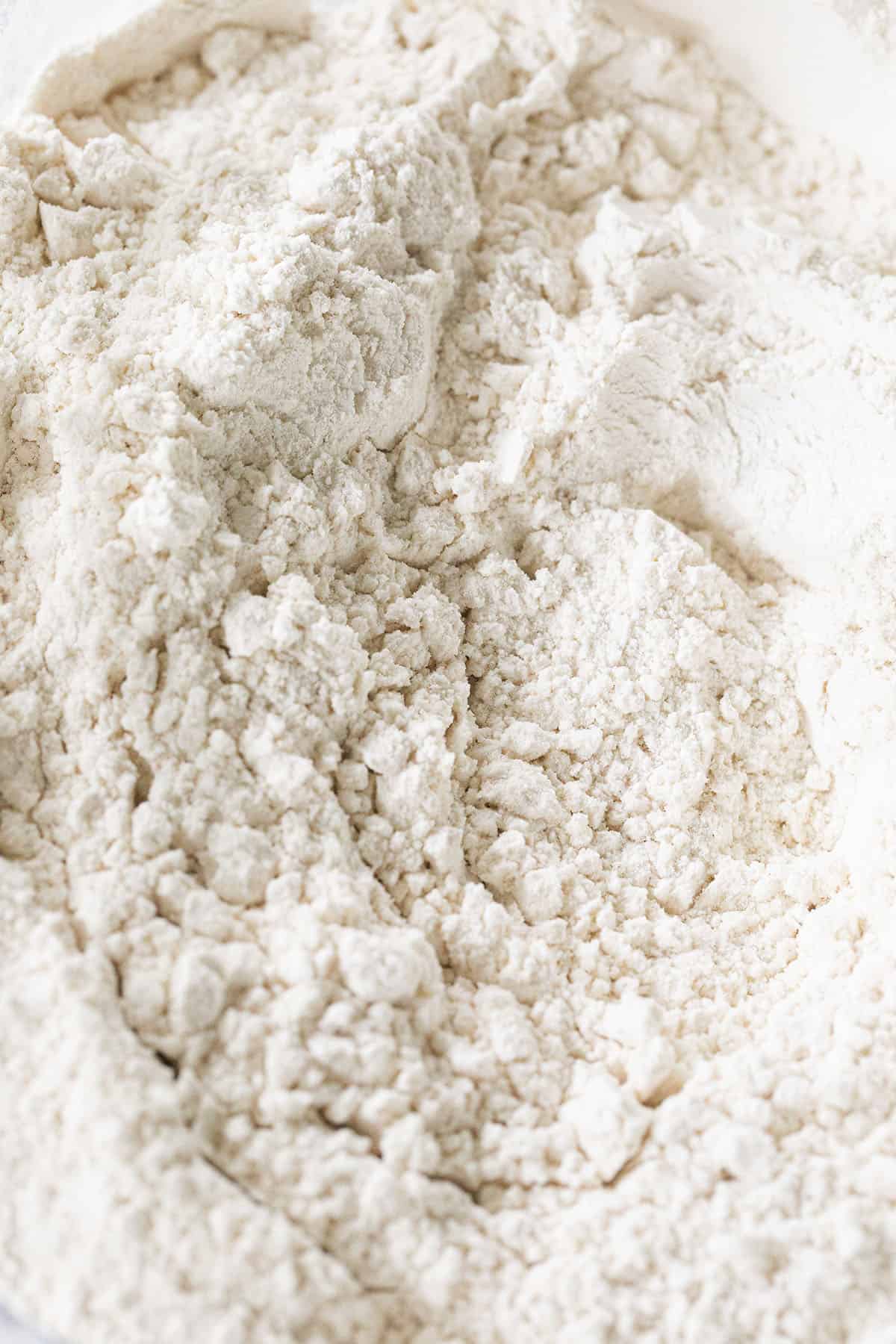
Pin this now to find it later
Pin ItTable of Contents
- What Is Flour?
- How to Properly Measure Flour
- 1. Fluff the Flour
- 2. Spoon in The Flour
- 3. Make It Level
- Sift the Flour
- Different Types of Flour
- All-Purpose Flour
- Almond Flour
- Cake Flour
- Self-Rising Flour
- Bread Flour
- Gluten-Free Flour
- Frequently Asked Questions
- Is Self-Rising Flour All-Purpose Flour?
- Is Almond Flour a Substitute for Flour?
- What Is the Weight of 1 Cup of Flour?
- Recipes with Flour
- How to Measure Flour Recipe
What Is Flour?
Flour is a powder produced from ground-up substances that produce different consistencies. These substances include grains, nuts, beans, and seeds.
Flour is one of the most common baking ingredients. It’s used in different dishes such as cereals, baked goods, pasta, and more. Wheat flour is one of the most common types and is used in most recipes.
How to Properly Measure Flour
Whether you’re baking a cake or making pie dough, measuring flour properly is one of the most important cooking tips you should follow. Using incorrect methods can negatively affect the quality of your dish.
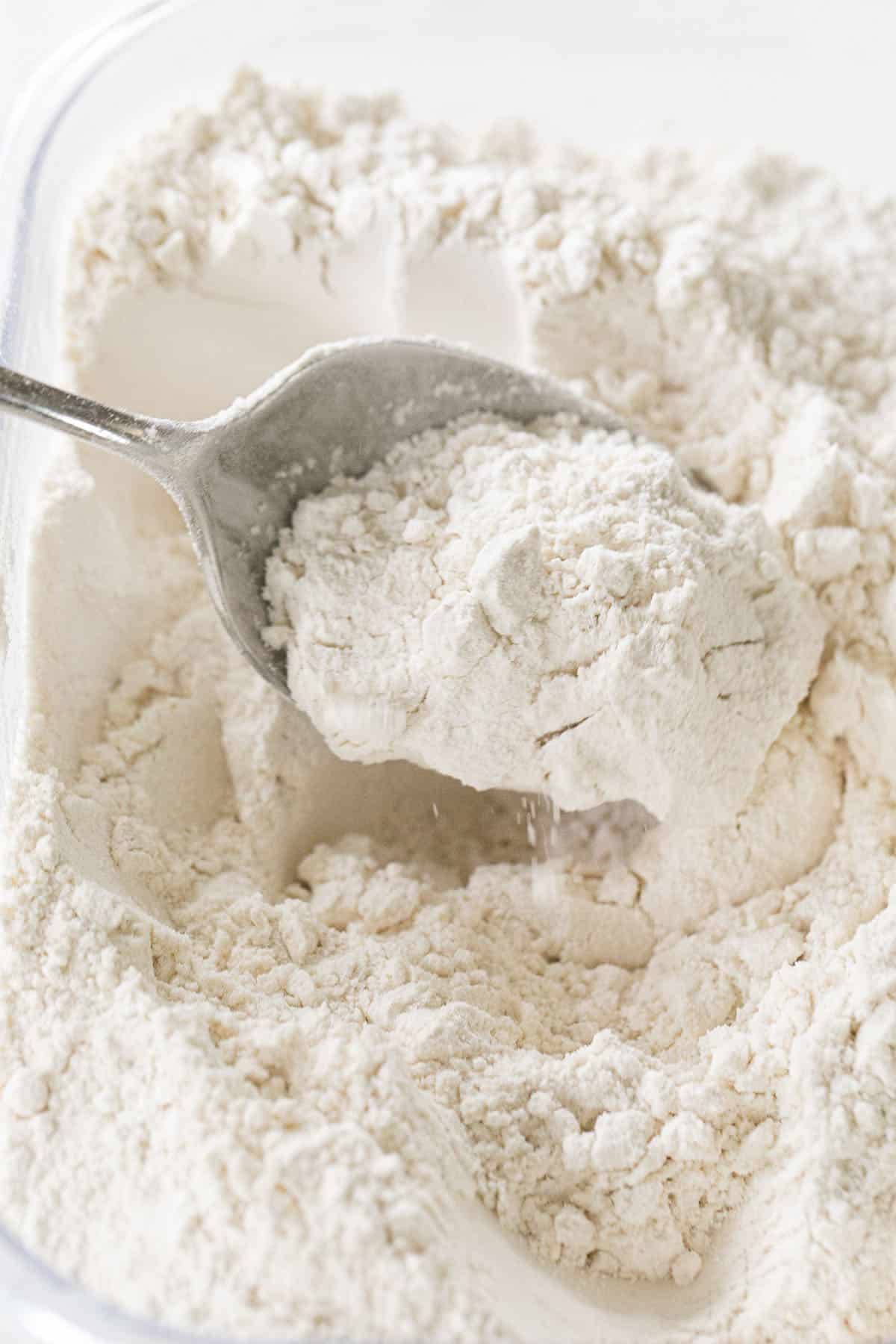
1. Fluff the Flour
The first step in measuring all-purpose flour, almond flour, or any other type of flour is to first fluff it in the bag or canister used for storage. This helps avoid scooping up packed flour.
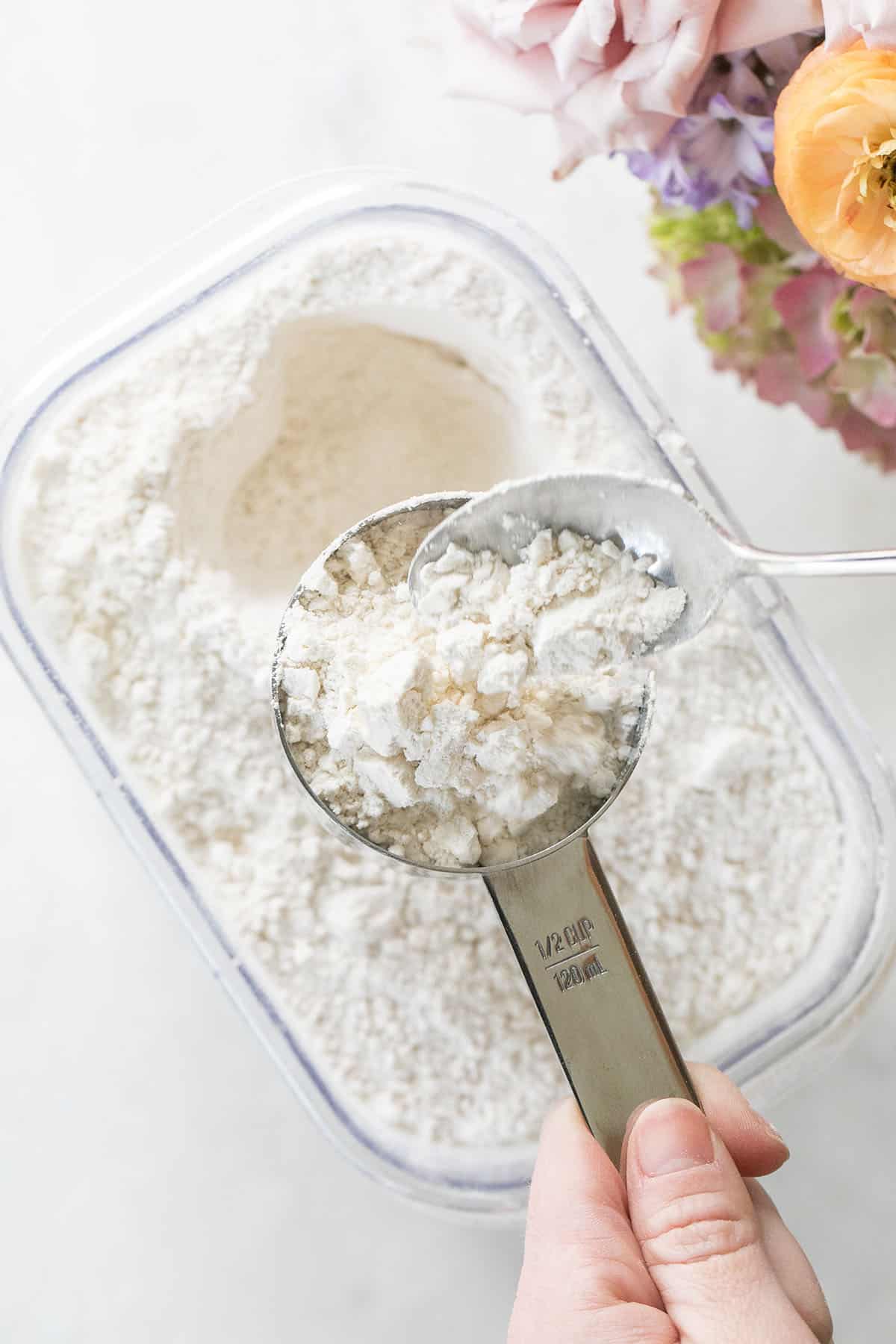
2. Spoon in The Flour
The next step is to grab your measuring cup and a spoon or scoop. You should use the spoon or scoop to pour the flour into the measuring cup. Avoid collecting the flour with the measuring cup directly as this results in packed-down flour.

3. Make It Level
For the third step, you’ll need a knife like a butter knife. Use the flat edge of the knife and scrape it across the top edges of the measuring cup. This helps remove excess flour without packing it down.
Sift the Flour
Some recipes call for sifted flour or flour, sifted. For the former, sift your flour before measuring. For the latter, measure the flour before sifting.
To sift flour, you’ll need a fine-mesh strainer or sieve. Pour the flour into the sieve and gently tap your hand against the side until all the flour has run through. If small bits are left in the bottom, you can use a spoon to push them through.
Different Types of Flour
All-Purpose Flour
All-purpose flour is a mixture of 80% hard wheat flour and 20% soft wheat flour. Hard flour is used in recipes such as bread and soft flour is used for cakes and pastries. The combination makes all-purpose flour adequate for most recipes.
Almond Flour
Almond flour is made from blanched ground almonds and is one of the most popular grain-free flours. It’s sweeter in flavor and has a thicker texture similar to cornmeal.
Cake Flour
Cake flour is also known as soft wheat flour and is finer than all-purpose flour. It is low in protein making it good for baked goods such as cakes and your favorite cookies.
Self-Rising Flour
Self-rising flour is a mixture of wheat flour, salt, and baking powder. It’s a common ingredient in older recipes. Some common recipes calling for self-rising flour include flaky biscuits and pancakes.
Bread Flour
Bread flour is known as hard wheat flour and is high in protein. It’s great for making heavier doughs more elastic such as yeasted bread.
Gluten-Free Flour
Gluten-free flour is a blanket term for flours made out of naturally gluten-free ingredients. Examples include rice flour and sorghum flour. They produce products that are much denser than flours containing gluten.
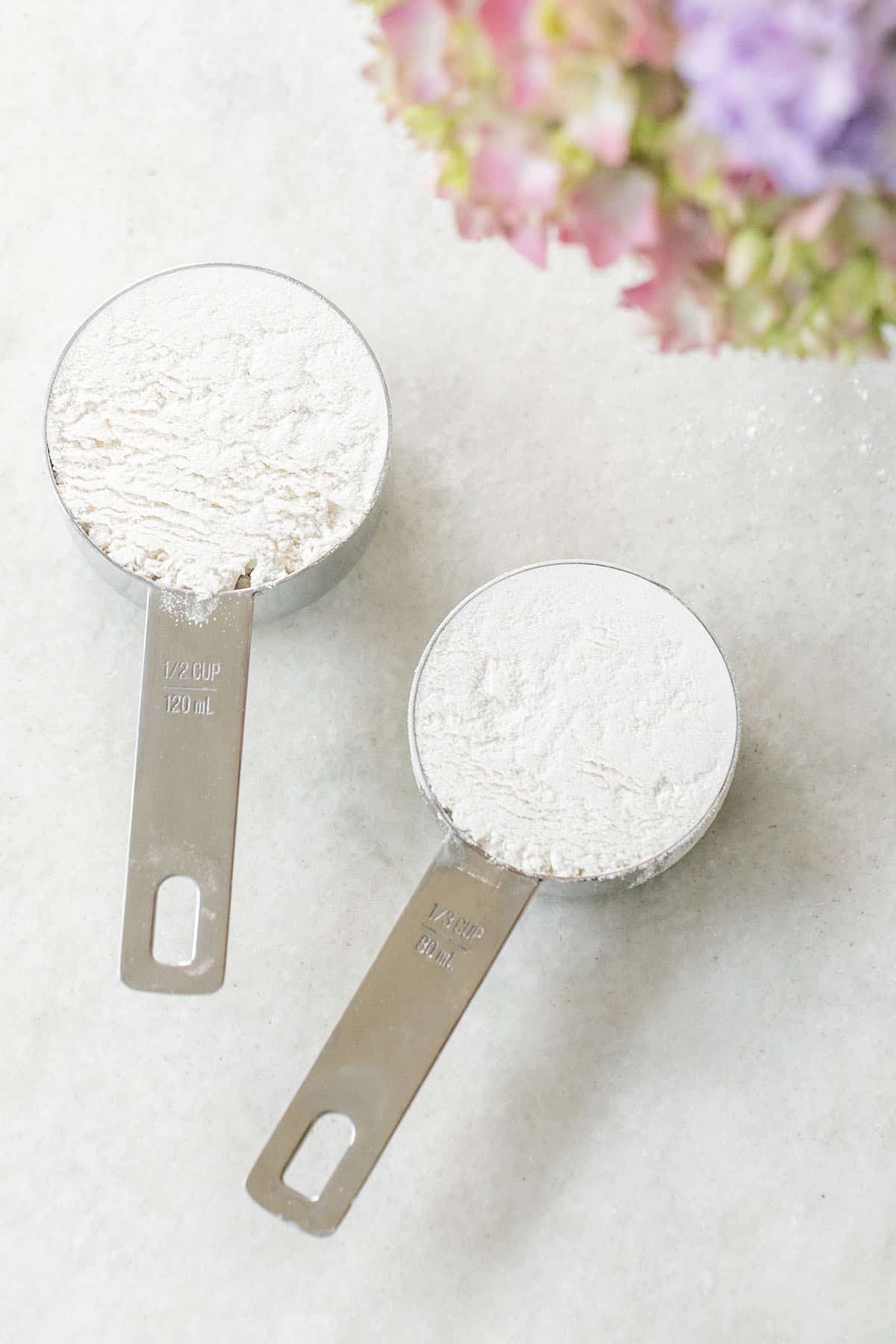
Frequently Asked Questions
If you’re looking for a cake flour substitute, you can use a combination of all-purpose flour and cornstarch. When looking at your baking ingredients, take the designated amount of cake flour and subtract 2 tablespoons for the all-purpose flour and add 2 tablespoons of cornstarch.
If you’re cooking with flour but find yourself without all-purpose flour, you can use cake flour for lighter recipes. You don’t need to make any adjustments in terms of the amount used since the ratio is 1:1.
However, be sure you follow the right cooking tips for heavier doughs. If you’re making recipes such as bread rolls or pizza dough, we recommend using heavier flour such as bread flour for better consistency.
Self-rising flour contains additional ingredients not found in all-purpose flour. These ingredients are salt and a concentrated form of baking powder. All-purpose flour can be used in most flour-containing recipes while self-rising cannot.
Is Self-Rising Flour All-Purpose Flour?
If you’re missing all-purpose flour from your list of baking ingredients, it’s important to understand that self-rising flour is not the same thing. However, you can still use it as a substitute in certain recipes.
To use self-rising flour, the recipe should call for 1/2 to 1 teaspoon of baking powder for every cup of flour. If your recipe calls for more baking powder, then you can subtract 1 teaspoon per cup of flour from your baking ingredients.
Is Almond Flour a Substitute for Flour?
Whether you’re looking for vegan flour or have gluten sensitivity, almond flour is a great substitute for all-purpose flour in terms of baking ingredients. To do this, use 1 cup of almond flour for every 1 cup of all-purpose flour.
Almond flour can be used for cookies, bread, and even as a bread crumb substitute. The texture will be slightly coarser than all-purpose but smoother than an almond meal (almond meal is ground with the skins attached where almond flour removes them).
What Is the Weight of 1 Cup of Flour?
Adding flour to your recipe by weight is a much easier approach than measuring with a measuring cup. It’s also more accurate and makes adjusting recipes easier.
When measured correctly, 1 cup of flour comes out to approximately 120 to 125 grams. You’ll see slight variation depending on the type of flour used. Ask about order
Now that you know how to measure flour, all of the different types of flour, and a few flour substitute options, you’re ready to start baking!
Recipes with Flour
Most of our cakes, cookies, and pies have flour. Here are just a few that you can make!
Butterless Chocolate Chip Cookies – Check out all of our favorite cookie recipes too!
The Perfect Pancakes for Brunch
Super Flavorful Apple Cider Donuts
The Best Homemade Chocolate Cake Recipe
Oatmeal Chocolate Chip Cookies
Chocolate Cherry Chunk Cookies
Now that you know everything about flour, you’re ready to start baking! Check out our kitchen conversion chart and how to make your own buttermilk and everything you need to know about baking powder and baking soda.
You can also FOLLOW US on FACEBOOK, INSTAGRAM, and PINTEREST to see more delicious recipes, cocktails, desserts, and parties!
This post may contain affiliate links. Please read our disclosure and privacy policy.

How to Measure Flour
Ingredients
- 1 cup Flour
Instructions
- The first step in measuring all-purpose flour, almond flour, or any other type of flour is to first fluff it in the bag or canister used for storage. This helps avoid scooping up packed flour.
- The next step is to grab your measuring cup and a spoon or scoop. You should use the spoon or scoop to pour the flour into the measuring cup. Avoid collecting the flour with the measuring cup directly as this results in packed-down flour.
- For the third step, you’ll need a knife like a butter knife. Use the flat edge of the knife and scrape it across the top edges of the measuring cup. This helps remove excess flour without packing it down.

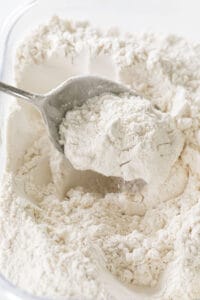
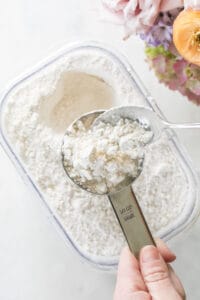
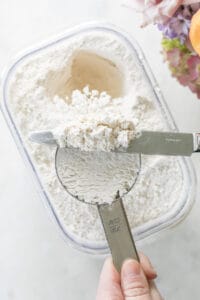
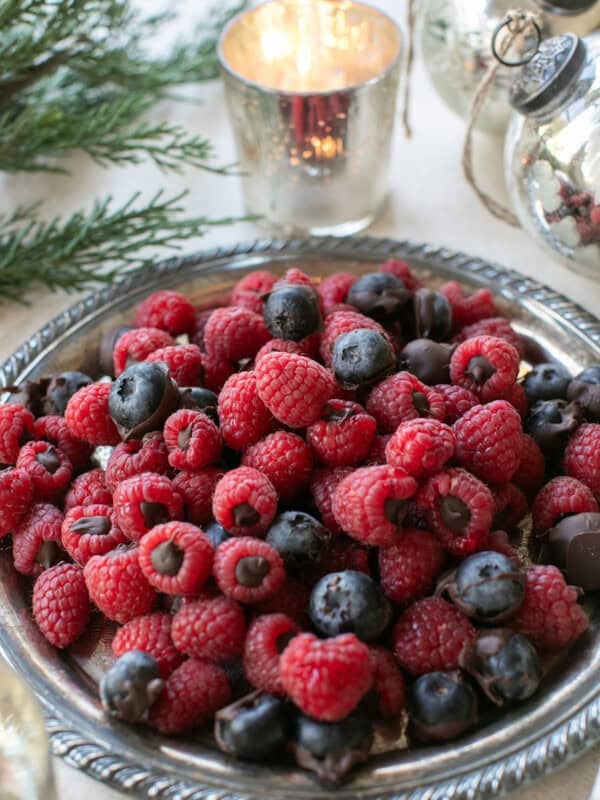
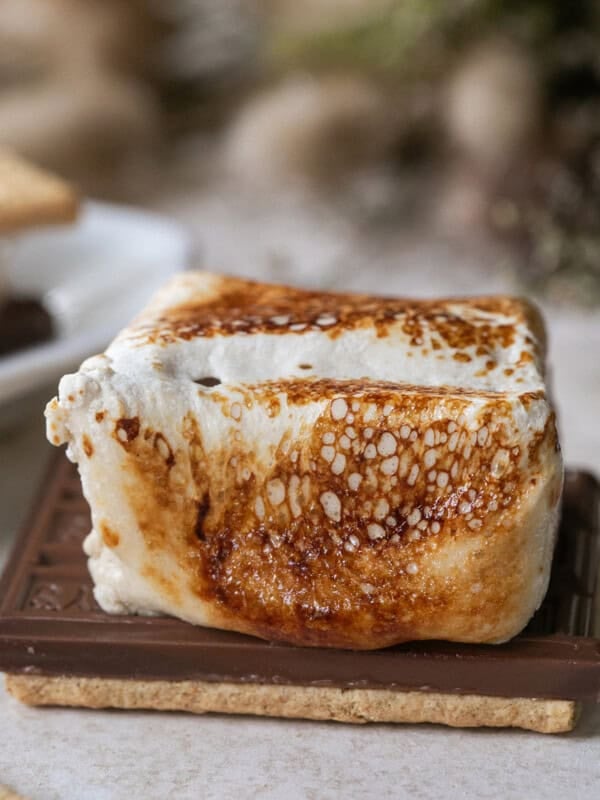
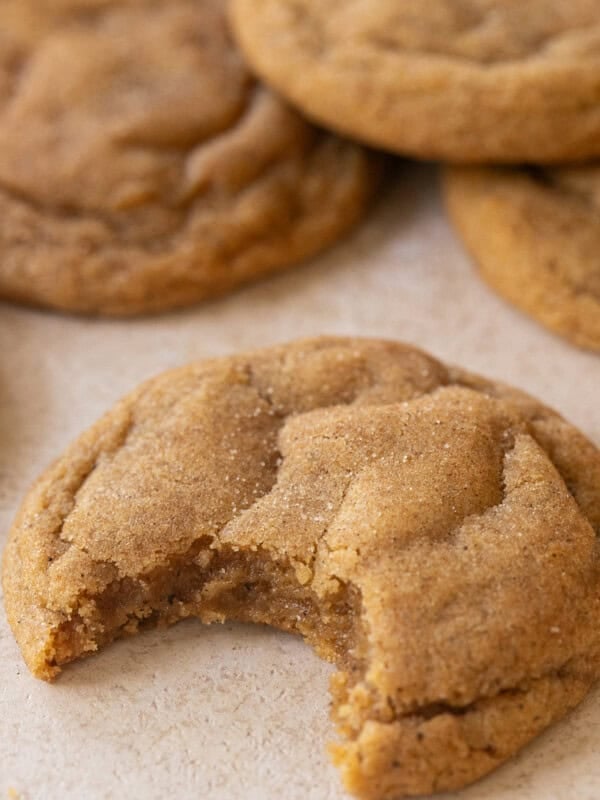
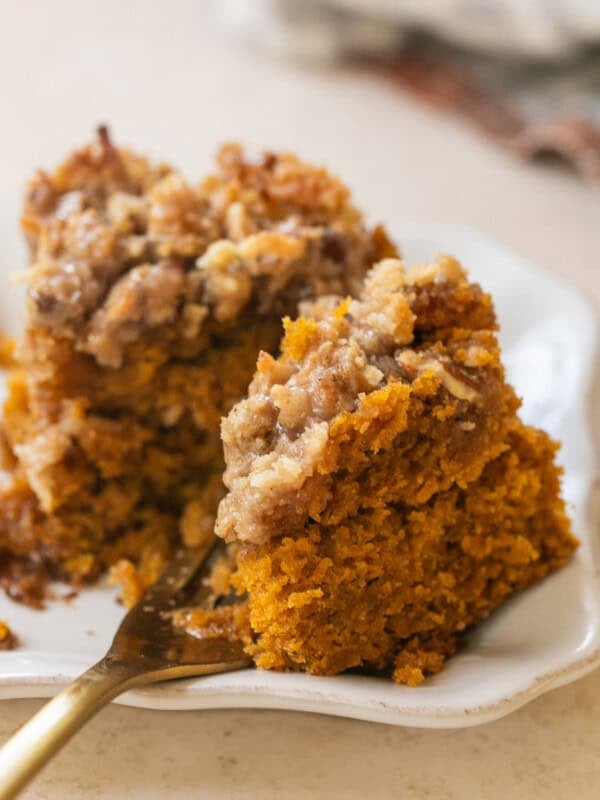













Hard to find recipe, doesn’t show how much
This isn’t a recipe, it’s a substitution and it says how to in the blog post.